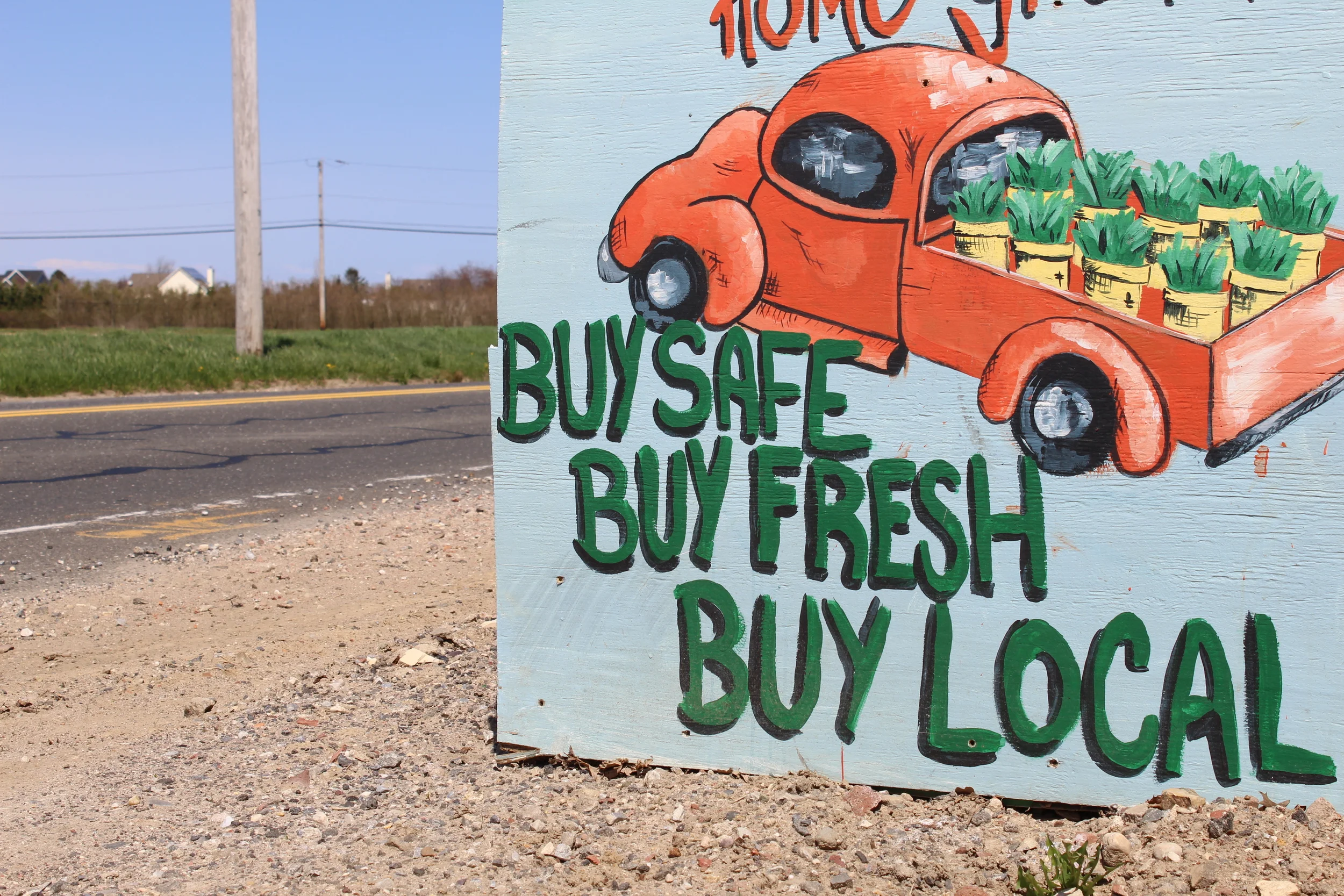From the Farm, to the Table
By Nicole Sims
Ira Haspel, the owner of KK’s the Farm, never thought of being a farmer and changing the way some people think about food. The 69-year-old farmer and his late wife bought an abandoned five acre farm in Southold, N.Y., in 1999. What was meant to be a vacation home turned into a place that provided some of the most popular produce on the North Fork.
Locally sourced food is a major contributor to Long Island’s economy. According to the most recent census done by the U.S. Department of Agriculture, the total sales of agricultural production on Long Island reached $258.7 million in 2007. Suffolk County accounted for 94 percent of these sales. This number is represented by the vast amount agriculture that is produced on Long Island including wineries, vegetable, fruit, livestock and aquaculture. Locals have also become more invested in maintaining a healthier lifestyle, living sustainably and eating at restaurants where the source of their food is clearly a part of the menu.
“We only cultivate about two acres, and on those two acres we produce a tremendous amount of food,” Haspel said. He grows his produce biodynamically, which is a method of organic farming. The produce he grows continues to be in high demand among restaurants like First and South on the North Fork, local businesses like The Orient Inn and even a food delivery service that makes deliveries on Long Island and even the five boroughs of New York.
His farm specializes in growing more than 30 varieties of greens, heirloom tomatoes and garlic. Haspel is one of more than 700 farmers in New York certified by the Northeast Organic Farming Association. This group also is a part of the local farm to table movement.
“It’s more than just a word, it’s a huge trend nationally,” said John Ross, the former owner of Ross’ North Fork Restaurant and pioneer of farm to table cuisine on Long Island. The phrase, farm to table, refers to consumers preference of getting fresh produced foods from local farms to the table of the consumer. This means having access to the freshest produce and livestock available, and also establishing connections with local farmers.
“What we’re now calling farm to table was just relationships that restaurants and distributors had with local growers,” said Marc Fasanella, a Stony Brook Sustainability Studies professor. “Farm to table creates this much more localized economy and the carrots might look different, the tomatoes might look different but that doesn’t matter because the restaurateur or grocer knows that farmer, and he knows that farmer wouldn’t give him any bad produce because they have a personal relationship.”
Ross was the first business owner on Long Island to operate solely on locally sourced food. Since he opened the doors of his restaurant in 1973, he built a reputation among locals for having the best and freshest menu. The menu changed daily, depending on what was available from local farms. “It’s one thing to buy a bottle of wine, or a good bag of carrots or whatever you want, [but] it’s another thing to know the people that grown them,” Ross said of the relationships he developed with local farmers over the years. “You don’t know Birdseye peas, you don’t know where they come from, you don’t know who owns it, you don’t know anything.”
This type of personal relationship between farmers and local business mean people don't necessarily have to rely on mass production for any of their products. It also eliminates the need for food shipped from overseas. “It is more costly at this point to use local foods, but the benefits outweigh the cost,” said Joan Turturro, a chef and owner of the Orient Inn. “Local foods are so fresh that they become the stars in a meal.”
While the sourcing of local foods for restaurants may be more expensive and even affect the price of dishes on the menu, Turturro is among a number of restaurants and business owners on Long Island that depend on local farmers, including Haspel, to supply her inn with the best of what is locally available to cook with. “When I am designing menus, I call my local farmers and producers to find out what is available and design menu offerings based on availability,” Turturro said.
“The key to all of it is immediate access and freshness,” said Peter Gianotti, a Newsday food critic. While the cost of local food at restaurants and local grocery stores may have a more expensive price tag, Gianotti feels there’s no excuse to not eating locally grown food when it is so readily available here. “Certainty on Long Island more and more restaurants are trying to make use of the local bounty,” Gianotti said. “On Long Island were fortunate in that one of the biggest businesses has been agriculture.”
Taking advantage of the bounty of produce, livestock and seafood available on Long Island is something that Judiann Carmack-Fayyaz, the Slow Food East End Chair, thinks should be available to everyone. “Good food should not be a privilege,” Fayyaz said. The local chapter of the non-profit organization, Slow Food USA, works toward promoting and teaching the community about local food consumption. “We believe that everyone should benefit fromwhat nature readily provides. It is really important for everyone everywhere to know that there is no obstacle to eating well, [and] if you can't afford to buy organic food or produce, then grow it.”
Photos By Nicole Sims






